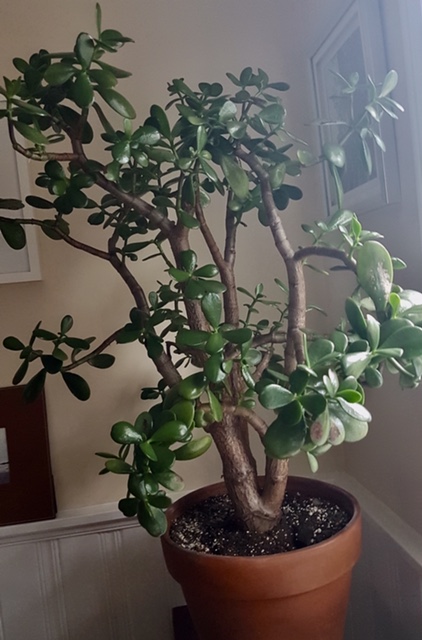As cold weather approaches and our gardens have been put to bed, our attention and efforts shift to our indoor plants. Northumberland Master Gardeners would like to share with you a couple of their favourite house plants and some tips for their care.

Jade Plant (Crassula ovata), a native of southern Africa, is popular for its easy caare and its long life span. They have been known to live for up to 100 years.
Jade Plant (Crassula ovata), a native of southern Africa, is popular for its easy care and its long life span. It is also a symbol of prosperity and good luck! A south or west facing window is usually best with at least four hours of sunlight daily.When caring for a jade plant, light access and watering are the most important factors. Water thoroughly and wait for the soil to almost fully dry out before watering again. Constant damp soil could lead to root rot.
The jade plant’s growing season is in the spring and summer so during these months it will require more frequent watering. If you aren’t sure if you are watering your jade plant properly, the leaves will usually tell you. If the leaves are dropping, shrivelled, or have brown spots then this means your plant isn’t getting enough water, but if the leaves are squishy and waterlogged, the you are watering too much. A jade plant is also sensitive to the salt that often appears in tap water, so using filtered or distilled water is best.
Transplant in spring before the growing season starts; generally transplant every two to three years for young plants and four to five years for older ones.
Hoya carnosa, native to Eastern Asia and Australia, grown for its attractive waxy foliage and sweetly scented flowers.
Hoya, otherwise known as wax plant or porcelain flowers are named for the waxy appearance of their leaves and their flowers. Hoya come from Asia and the Western Pacific Countries. In their natural environment they are subjected to cooler nights and heavy monsoon seasons. For success with Hoya as a house plant, you need to replicate these conditions in your home with a cool environment at night and frequent misting. Most Hoyas cannot withstand direct intense light. Most species grow in gaps in the forest, they are used to dappled or diffused light so again that should be replicated at home. Most Hoyas do not mind being a little pot bound. It is not necessary to repot your Hoya but be sure to refresh their soil every second or third year. Use a terra cotta pot to house your Hoya as it tends to be porous and remove water from the soil. When you water, water really well so the entire root ball is wet, then let the plant dry out completely before watering again.

